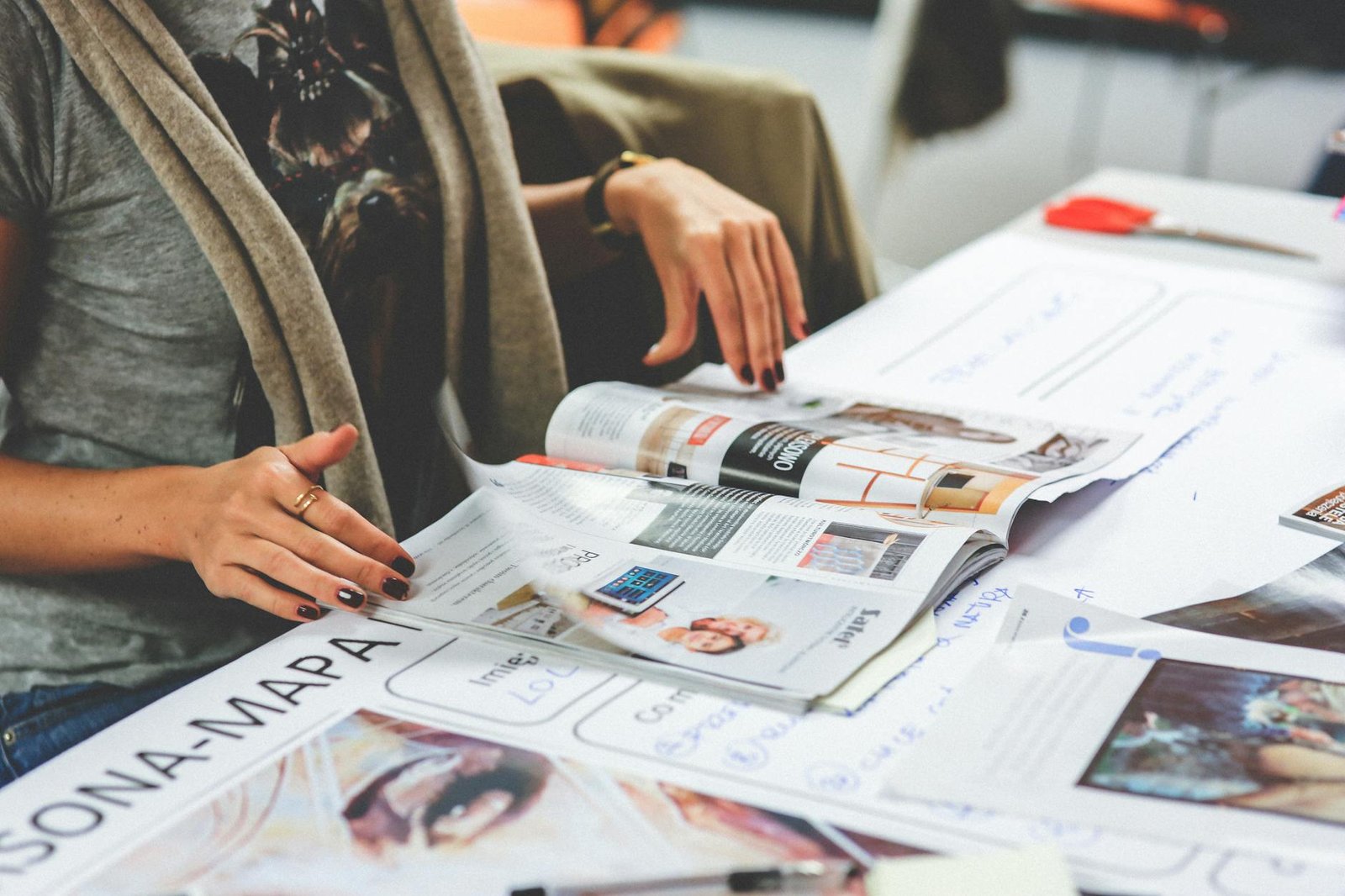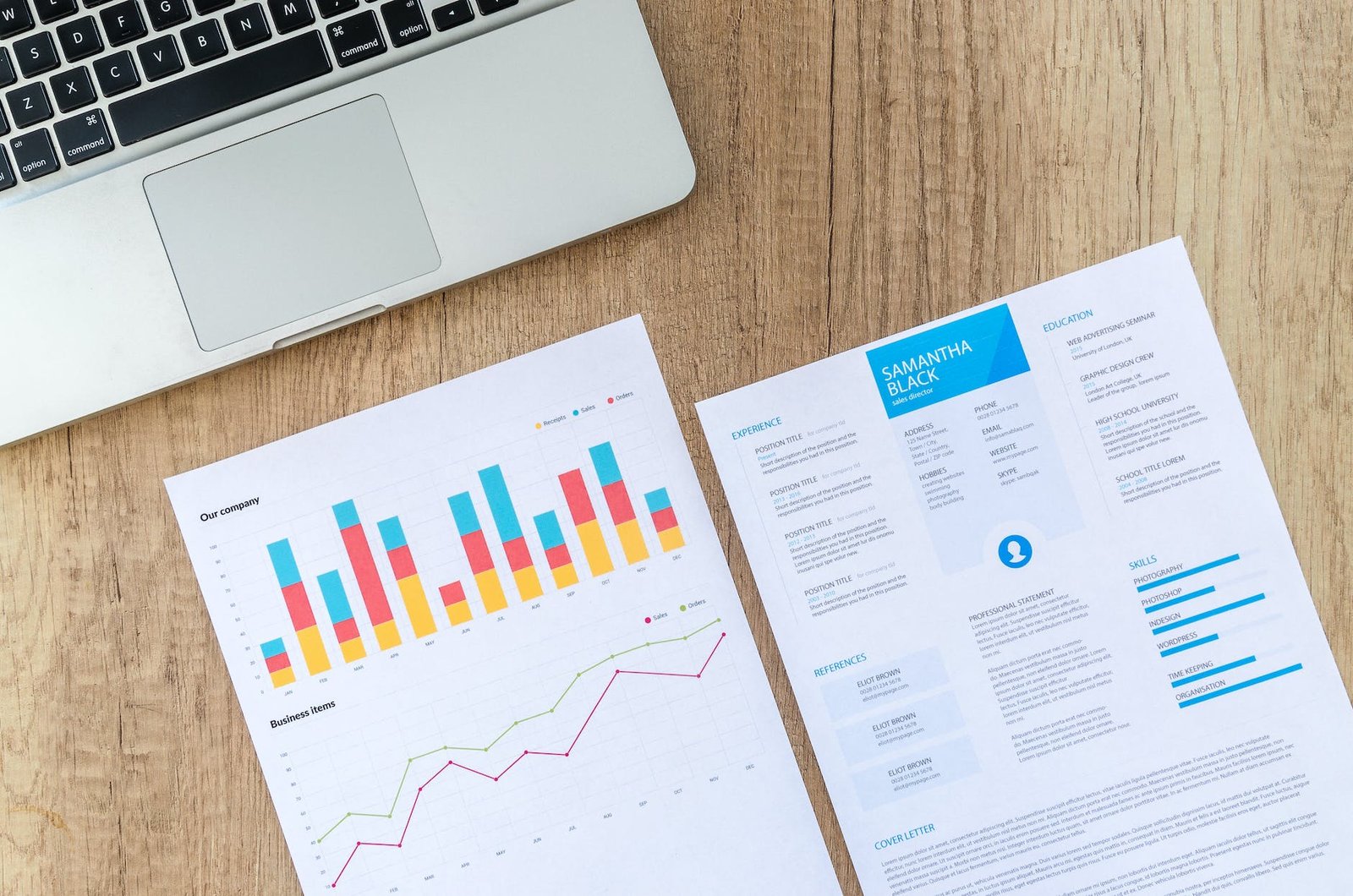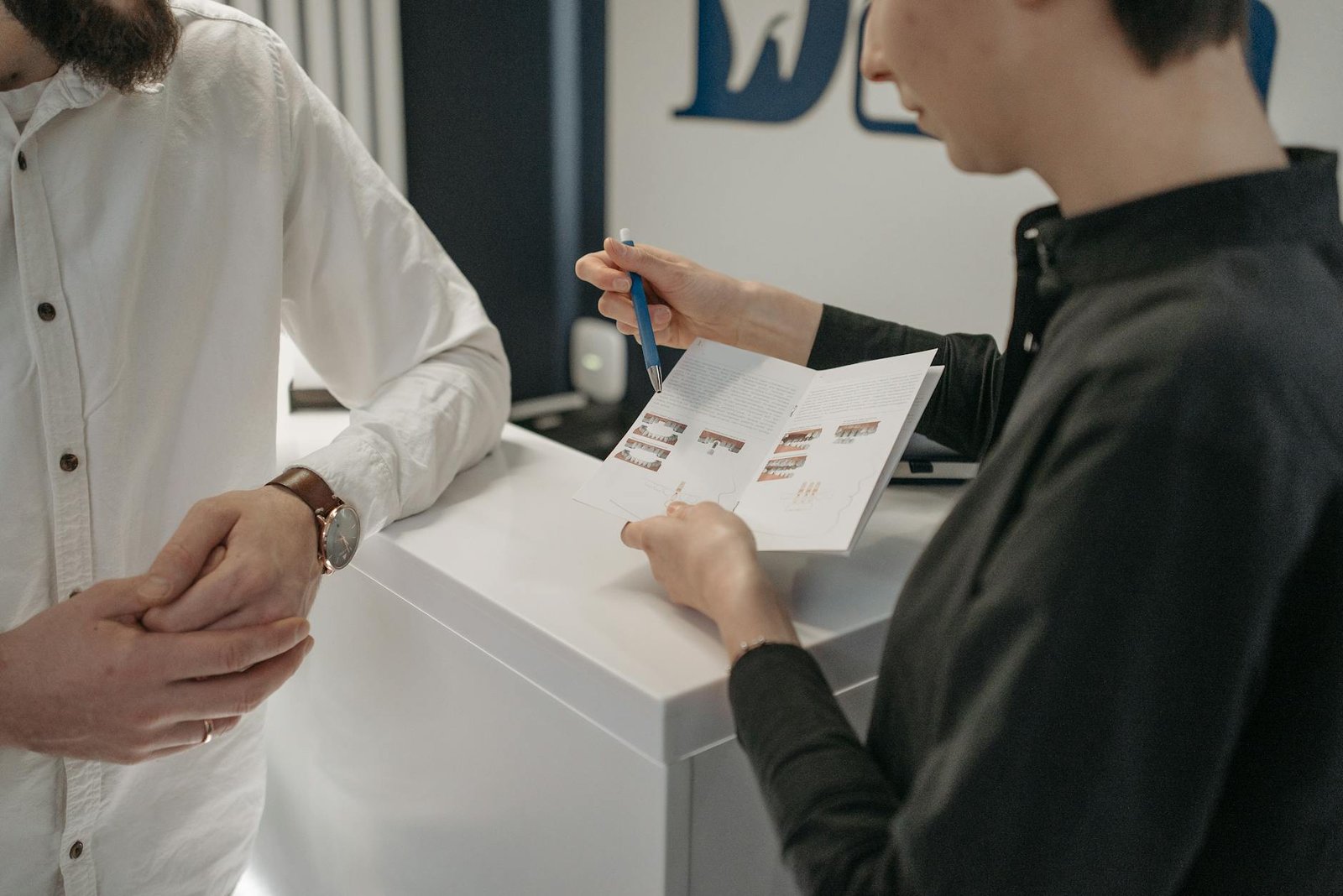In today’s digital era, you may wonder if print brochures still hold value. With websites, emails, digital marketing, and social media dominating marketing channels, is investing in printing like brochure printing still worthwhile? In terms of the effectiveness of a quality brochure, the answer is a resounding yes. Though the media landscape has changed, brochures remain a critical tool for businesses.
In this comprehensive guide, we will explore why brochures are indispensable, examine effective brochure design strategies, and provide actionable tips to maximize your brochure success. Let’s delve into the diverse benefits brochures offer and how to harness their marketing power.
Why Are Brochures Still Valuable for Businesses?
In a digital-centric world, you may wonder if brochures still generate returns for your marketing budget and efforts. Though brochures have existed for centuries, they remain a vital tool when thoughtfully executed. Here are key reasons brochures, like the popular bi-fold type, are still invaluable.
1. Commanding Print Presence
Despite the convenience of digital channels, high-quality print like brochures makes a lasting impression. The tangible nature of brochures establishes credibility and trust. According to research, 75% of people think print is more impactful. Brochures also grab better attention as they don’t suffer from display blindness plaguing online ads, especially when they’re tri-fold.
2. Multi-Sensory Customer Engagement
Brochures engage multiple senses, using vivid imagery, tactile paper, and striking colors. This multi-sensory experience of print quality forges stronger emotional connections and recall. Having brochures customers can touch makes your brand real on a deeper level.
3. Customization and Personality
Brochures allow extensive branding customization to reflect your unique identity and voice. Through detailed design choices, you craft an experience aligned to your positioning and audience. This level of personalization builds brand affinity.
4. Targeted Messaging Capabilities
Unlike generic website content, brochures allow focused messages tailored to niches. With variable printing, you can hyper-personalize content for each recipient. Brochures are powerful for conveying specific offerings to distinct segments.
5. Audience Segmentation and Retargeting
With visitor tracking, tradeshow brochures let you identify hot prospects for follow-up. You can then retarget these high-value leads through personalized brochure mailings. This drives greater conversions than anonymous website visitors.
6. Credibility for Complex Products/Services
For complicated offerings, brochures are ideal for explaining details and building trust. The in-depth space allows you to demonstrate expertise and evidence value. This establishes credibility, especially when competing against simpler products.
7. Post-Meeting Collateral
After in-person meetings and tradeshows, brochures remind prospects about your brand. Recipients often reference brochures weeks later when making decisions. So brochures continue marketing post-interaction.
8. Integration With Digital Experiences
Through QR codes, augmented reality, and creative copywriting, brochures can integrate with digital. This delivers an omnichannel experience across print/online touchpoints.
9. Environmental Sustainability
With eco-friendly papers and smart distribution, brochures can support sustainability efforts. And unlike ephemeral digital media, print materials often enjoy extended life in readers’ hands.
10. Versatile Uses Across Customer Journey
Brochures serve diverse goals across the buyer journey from driving awareness to retention. Match usage to needs at each stage for maximum impact of print products.
Though brochures have been around for ages, their unique advantages make them a vital tool. When skillfully executed, custom brochures build relationships and deliver ROI across the customer journey, serving as a proof of your commitment to them.

When Are Brochures Most Effective?
To maximize results, you must align brochure distribution with key moments when customers desire information. Below are top situations where employing brochures works:
New Product/Service Launches
During launches, brochures enable educating customers about new offerings. Provide brochures with purchase, at dedicated events, or through targeted mailings – this way you can get your brand out there.
Trade Shows and Conferences
These hectic events mean prospects appreciate takeaways to review later. Having custom brochures ensures your brand stays top of mind after the first encounter.
Customer Onboarding
Welcome new customers by including brochures in onboarding kits describing key features, policies and how-tos. This accelerates ramp-up.
Direct Mail Campaigns
Combining brochures with personalized letters/postcards grabs attention. This convinces recipients to devote time to your products and services message in the brochure.
Reference Material
For complicated or lengthy product or service processes, quality brochures serve as helpful reference guides customers can easily revisit.
Proposals and Presentations
Reinforce in-person or online presentations by providing brochures covering key details. This facilitates recall and sharing of your custom brochure.
Business Development Outreach
When engaging new prospects, brochures establish credibility and professionalism while conveying capabilities.
Customer Reactivation
Send tactful brochures to inactive customers announcing new offerings or limited promotions to re-engage them.
Waiting Rooms
Place brochures describing services/products in waiting areas of businesses and healthcare offices to inform captive audiences.
Takeaways
After in-person meetings in Qatar, giving visitors trifold brochures ensures your brand stays top-of-mind long after.
The situations above represent prime moments when brochures deliver immense value during the decision process. Identify key phases and touchpoints in your customer journey to insert brochures most effectively.

Captivating Brochure Design Principles
Your brochure’s design directly impacts engagement and conversions. Without strong design, even the best content falls flat. Below are essential principles for brochure design excellence:
Reflect Brand Identity and Tone
All elements should strengthen brand recognition through logos, fonts, imagery, colors, and messaging aligned with your identity. This method builds familiarity with your products and services demonstrated in types of brochures.
Hierarchy and Flow
Use headlines, subheads, spacing, and content sequencing to direct the reader’s eye in an intentional flow through the brochure.
Balance Information and White Space
Find equilibrium between ample content and white space – you can use a calculator to measure the brochure space. Too sparse looks incomplete while overcrowded overwhelms.
Emphasize Call-to-Action
Leverage contrast and space to highlight your desired CTA. This could be visiting your website, scheduling a meeting, signing up for a demo, or redeeming an offer.
Incorporate Quality Graphics
Relevant photos/illustrations make content more memorable and engaging. Ensure images are high-resolution and support key messages.
Use Custom Photography
Stock photos feel generic. If resources allow, customize imagery to creatively reflect your business and audience for greater relatability.
Excellent Page Layout
Strategically group related content together through grids, templates and zones for polished, organized layouts. Easy-to-follow for readers.
Careful Typography
Stick to two complementary fonts – one for headlines and one for body text in your pamphlet or trifold brochure. Ensure fonts are readable, legible and match brand personality.
Strategic Color Application
Limit colors to two or three matching brand palette. Use contrast, color theory andwhite space to direct attention. Vibrant colors make stronger impressions.
Consistent Branding
Maintain consistent logo, branding elements, fonts, imagery and tone across brochures in a campaign for brand reinforcement.
By mastering these design principles, you create brochures which captivate readers while powerfully conveying your visual identity. A well-designed custom brochure makes your brand recognizable and memorable.

Crafting Compelling Brochure Content
Without great content, even the most beautiful digital printing design falls flat. Follow these tips to craft effective brochure copy:
Lead with Value Prop and Branding
In your custom pamphlet, open strong by clearly presenting your value proposition, branding, and what makes you unique. Get readers’ attention immediately.
Speak to Reader Needs and Pain Points
Demonstrate you understand reader challenges through relatable and human language. Then show how you solve these needs better than alternatives.
Promote Key Differentiators
Spotlight your most important competitive differentiators or advantages relative to substitutes. Customers desire differentiation.
Quantify Benefits Through Data
Include stats, testimonials, ratings or awards that substantiate claims and build credibility. Specific figures engage readers.
Use Reader-Centered Language
Use “you” pronouns and adopt the reader’s voice in your custom brochure printing strategy. Avoid overusing buzzwords or corporate-speak. When creating custom pamphlets, write in a conversational manner.
Divide Into Concise Sections
Chunk content into short sections with descriptive headings and ample white space. This organizes information for easily skimming.
Carefully Balance Copy and Visuals
Neither overwhelm readers with long blocks of copy nor bore them with space-filling imagery. In terms of design templates for your custom brochure, seek equilibrium.
Close with Clear Call-to-Action
End each section with a specific CTA, whether visiting a landing page, scheduling a consultation, requesting information, or signing up for promotions. Provide next steps.
Guide Readers Strategically
Utilize transition phrases, numbered lists, and intentional content sequencing in your custom brochure to smoothly guide readers through product or service key messages and calls-to-action.
Refine Messaging for Audience
For different targets, customize terminology and messaging to resonate with their specialized needs and common language patterns.
Conversational and Direct Tone
Adopt a casual, conversational voice that directly addresses readers to emulate engaging with them one-on-one.
Compelling Headlines
Well-crafted headlines grab attention. Use active voice, emotional triggers, wordplay, and specificity to make headlines persuasive.
Manage Length Appropriately
Find balance between overview brevity and including essential information based on goals. Typical lengths are 6-12 pages.
Meticulous Proofreading
Nothing sabotages credibility like typos or grammatical errors. Thoroughly proofread and test for mistakes before printing.
Cohesive Brand Voice
Maintain a consistent tone and style matching your brand across all content elements. This strengthens familiarity.
With thoughtful ideation and polished writing, your content will capture interest while positioning your brochure as an invaluable resource. Remember, words make the first impression.

Optimizing Brochures for Maximum Impact
Beyond core design and messaging, optimize these additional elements using a competent design tool.
Format/Shape
Consider horizontal, vertical, square or unique custom shapes and various folding options such as z-fold for your brochure, in standard brochure sizes. Match shapes to messaging and usage. Square and vertical formats work well digitally.
Folding Style
Evaluate trifold, accordion folds, gatefolds or unique folds to make opening interactive and enjoyable. Add dimensionality.
Paper Quality/Weight
Go beyond basic paper stock. Heavier paper, texture, presses, spot finishes and special materials increase perceived value.
Personalization
When creating high-quality print materials, use variable print names, images, or offers for each recipient when possible. Utilizing different folds in brochure design can boost relevance and engagement.
Creative Embellishments
Consider varnishing, embossing, foil stamping, die-cutting, specialty inks or booklet formats for added flair.
Scannable Elements
Incorporate QR codes, augmented reality, NFC chips or hidden messages to reward reader interaction and connect print to digital.
Purposeful Size
Measure dimensions not just by paper sheets but final use. If mailing, ensure correct postage and envelope fit.
Hand Placement
Optimize layout and fold so critical info is viewable where recipients naturally grip the brochure.
Easy Navigation
Use page numbers, color coding, numbered lists, or a table of contents in your high-quality brochure so readers can find sections quickly when revisiting.
Contact Info Prominence
Place contact details, social media, and website prominently throughout for readers to easily take action.
By fine-tuning these extra facets, you deliver brochures providing multi-sensory experiences with utility far beyond a standard trifold. Treat your brochure as a memorable brand experience versus a perfunctory collateral piece.

Integrating Brochures Into Your Marketing Mix
To maximize brochures’ impact, skillfully incorporate them into your omnichannel marketing strategy through:
Website Integration
Feature brochure downloads/mail offers prominently onsite. Incorporate matching imagery, create your brochure with consistent messaging across channels.
Social Media Promotion
Post brochure previews and downloads on social channels. Run giveaway contests for increased sharing.
Direct Mail Coordination
Mail high-quality brochures with personalized letters or postcards. Sequence for sustained nurturing.
Email Coordination
Promote and link to brochure content within targeted email campaigns. Coordinate offers and other promotions.
Trade Show Follow-Up
Collect leads then mail brochures to solidify connections post-show.
Sales Enablement
Arm sales reps with brochures as helpful education tools during prospect meetings.
Public Relations Outreach
Include brochures in media kits. Offer exclusive content to build relationships.
QR Codes
Place codes on brochures driving traffic to landing pages, contact forms, offers and video content.
Reviews and Testimonials
Pull compelling client quotes and ratings from brochures into digital channels to build credibility across touchpoints.
With strategic coordination, brochures support digital touchpoints while digital channels extend brochures’ reach and utility. This omnichannel approach ensures consistent messaging and maximizes results.

Measuring and Improving Brochure Performance
To refine your brochure strategy, diligently track key performance indicators:
Click and Read Rates
For digital brochures, measure click rates on teasers/links and scrolling engagement. Higher interaction indicates quality.
Lead Generation
Record new prospect contact details captured through brochure offers. Rising leads show positive traction.
Traffic From Offers
Track landing page visits or program sign-ups from brochure codes and QR scans to gauge response.
Sales Conversions
If used in sales, monitor closed deal size/volume by reps actively leveraging brochures to educate prospects.
Customer Feedback Surveys
Solicit feedback through brochure or website surveys regarding usefulness, sentiment and impact.
By regularly reviewing metrics, you gain insights to sharpen your brochure strategy and boost performance in areas needing refinement. This drives continual optimization.

Common Brochure Printing Mistakes to Avoid
When creating brochures, sidestep these missteps:
Overwhelming Design and Copy
Cluttered layouts with long blocks of copy lead to ignored brochures. Adopt the “less is more” approach when creating your brochure, especially when designing different types of brochures like tri-fold.
Outdated Branding and Imagery
Using old logos, taglines or stock photos screams “out of touch”. Refresh regularly.
Irrelevant, Generic Messaging
Failing to tailor messages to audience needs, such as those in Qatar, guarantees low engagement. Customize content.
Passive Voice and Corporate Jargon
This dilutes messaging effectiveness for readers. For high-quality brochures, use conversational language.
Ignoring Accessibility
From font choices to color contrast, ensure inclusive, accessible design for all readers.
Lack of Call-to-Action
Not guiding readers on next steps in your pamphlet is a missed opportunity. Add specific CTAs.
Overlooking Mobile Optimization
Small text and buttons in non-mobile optimized brochures frustrate readers. Opt for print your brochure service for better user experience – custom sizes can make your brochure stand out. Design responsively.
Relying on Stock Brochure Templates
Generic templates communicate laziness, not craftsmanship. Customize thoughtfully.
Forgetting Compelling Headlines
Readers skip over boring headlines. Craft attention-grabbing headers relevant to audiences.
Not Proofreading Vigilantly
Typos and grammar errors look highly unprofessional. Thoroughly proofread!
By avoiding these missteps, you elevate brochures as a polished extension of your brand versus an afterthought. Refinement comes through experience and robust quality control.

The Future of Brochures
Though brochures have spanned centuries, exciting innovations will further elevate their future impact through:
Enhanced Personalization
Leveraging AI and data, hyper-personalized messaging and offers at individual levels will become the norm.
Sophisticated Interactivity
Through AR, VR and NFC, brochures will activate immersive digital experiences and seamless shopping.
Targeted Variable Print Runs
Reduced waste and costs by printing ultra-custom quantities and variations for niches.
Premium Formats
Innovative folds, finishes, and embellishments, applied using a printing press, will turn brochures into collectible artefacts and experiences.
Eco-Conscious Materials
Consumer demand for sustainability will make eco-friendly, biodegradable materials standard.
Omnichannel Message Consistency
Brands will optimize brochure and digital content in tandem for integrated messaging across channels like printing press and print your brochure service.
In summary, as technology progresses and consumer preferences evolve, brochures will remain a beloved medium through constant innovation. Their remarkable longevity proves their unique value in marketing.

FAQs About Business Brochures
What are the most effective brochure sizes and formats?
For versatility, the three standout options are 8.5”x11” trifold, 8.5”x14” bifold, and 11”x25” half fold. Ensure dimensions fit envelopes. Wide panoramic formats are eye-catching.
How long should a brochure ideally be?
Aim for 6-12 print-ready pages encompassing key sections like overview, product/service details, testimonials, design templates and contact info. Avoid excessive length but include essential info.
What should my brochure paper stock be?
For professional results, choose from paper options 80lb to 100lb matte or gloss text paper which can enhance your print quality. In creating a quality brochure, consider ink compatibility with uncoated or coated paper. Heavier stocks feel more substantial. Add special finishes for extra flair.
What is the average brochure printing cost?
Exact costs depend on specifications, so contact Brandscape.shop today!
What are tips for writing effective brochure copy?
Keep language direct, specific and scannable. Don’t worry, simply contact Brandscape.shop today and we will guide you through the process!


Leave a Reply